To provide you with the best experience, cookies are used on this site. Learn more

To provide you with the best experience, cookies are used on this site. Learn more


To build your own Itinerary, click  to add an item to your Itinerary basket.
to add an item to your Itinerary basket.
Already saved an Itinerary?

You are here: Inspire me > Nature & wildlife > Springtime foraging
According to professional forager Chloé Newcomb Hodgetts, Monmouthshire is one of the best areas for foraging in the whole of the UK. And Chloé should know - she forages daily in the beautiful county she now calls home. We caught up with this ‘ambassador of wild food’ during Spring, to find out more about her lifelong passion for nature and her flourishing foraging business, Gourmet Gatherings.

(Chloé Newcomb Hodgetts)
Q. How and when did you start foraging?
A. As a child, I travelled worldwide with my family, and loved to explore the local wildlife. Under the guidance of my father, I enjoyed rockpooling, mushrooming, fly and deep-sea fishing. Safaris and tribal visits inspired me to undertake a degree in African Studies and Swahili, then my love of the sea led me to do another degree in Aquatic Zoology, which included a stint of research in the Caribbean. I remained in the Caribbean for a further 15 years, during which time I conducted research towards a PhD in Chemical Ecology, taught Marine Invertebrate Zoology, and owned a cocktail and tapas bar on stilts over the water in a beautiful bay. While living in the Caribbean, I enjoyed learning about medicinal plants from elderly locals, building fish-pots from sticks, spearfishing and catching crabs and octopus by snorkel!
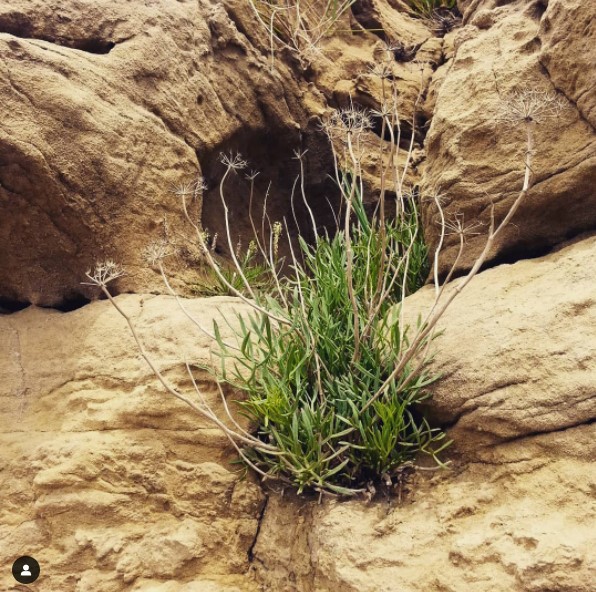
(Rock samphire at Sudbrook)
Q. How do you discover the finest foraging spots in Monmouthshire?
A. On returning to the UK, I settled in Monmouthshire and had the good fortune to meet the late, renowned, expert forager Henry Ashby. A local man with a formidable knowledge of wild edibles, Henry took me under his wing, as an apprentice. He handed down to me his expertise about wild foods and their uses, and the best picking spots locally. Henry was the driving force which enabled me to become a professional forager, and I’m passionate about continuing his legacy.
As a forager you learn to recognise the potential of habitats; I go looking for the right environment rather than a particular species. I have found new foraging spots by putting in an awful lot of mileage on foot, often exploring terrain for up to eight hours a day. Finding a new fruitful spot is really exciting – such as coming across a reen with access to the estuary, where nobody ever walks. I’ve found edibles as far as the eye can see, in such abundance it looks like they are being cultivated!
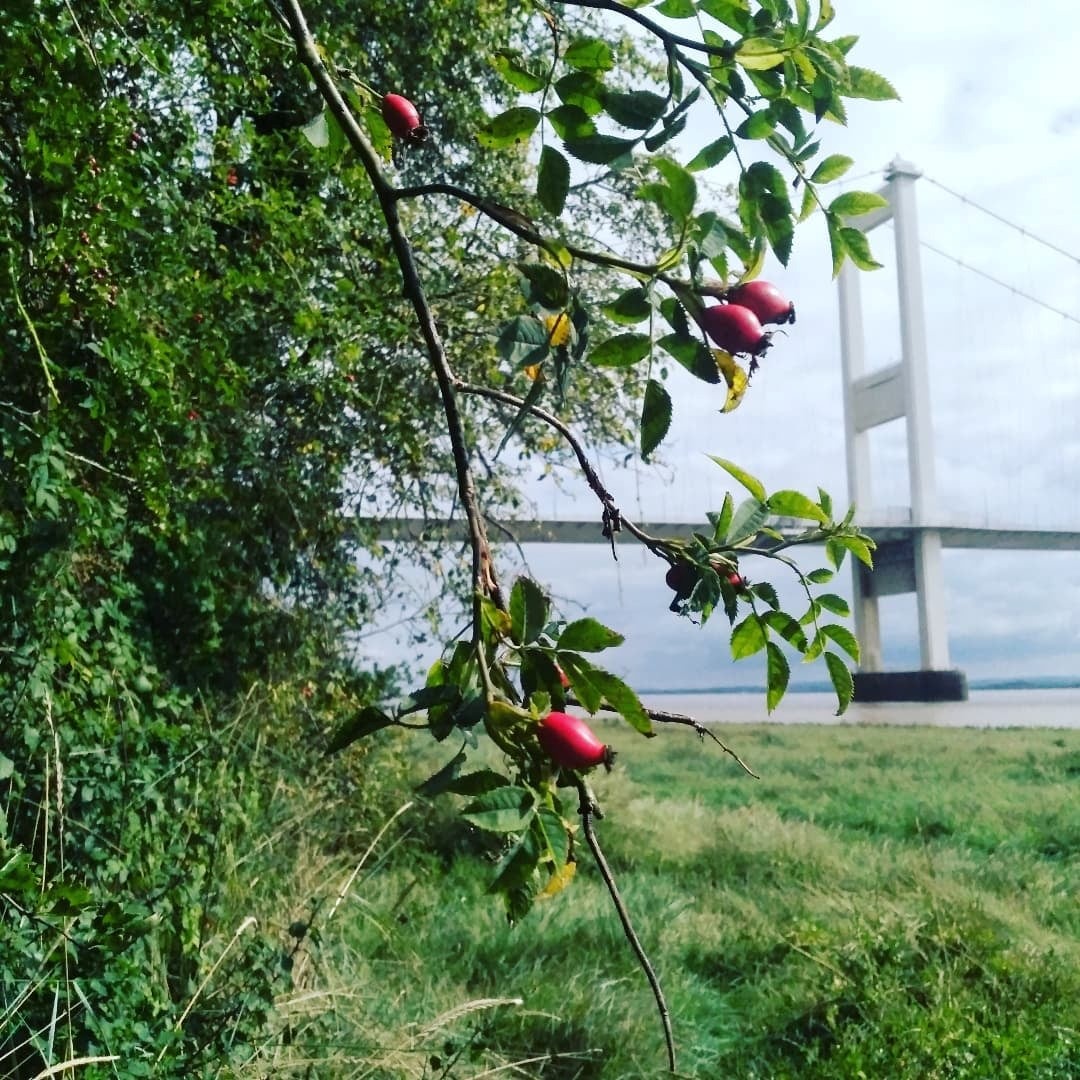
(Rosehips on the Severn Estuary)
Q. What’s the best time of year to go foraging in Monmouthshire?
A. There are wild edibles to be found in this bountiful county 365 days a year. As one edible species fades out, another pops up. Mother Nature provides a nutritious wild larder all year round. People may link foraging to harvest time – late Summer and Autumn – when fruits and fungi are in abundance, but Spring is undoubtedly when some of the most tender, tasty greens are prolific. Even in Winter, plenty of wild edibles can be picked, such as Yarrow, Wild Cabbage, Rock Samphire, Mugwort, Alexanders and Three Cornered Leek.
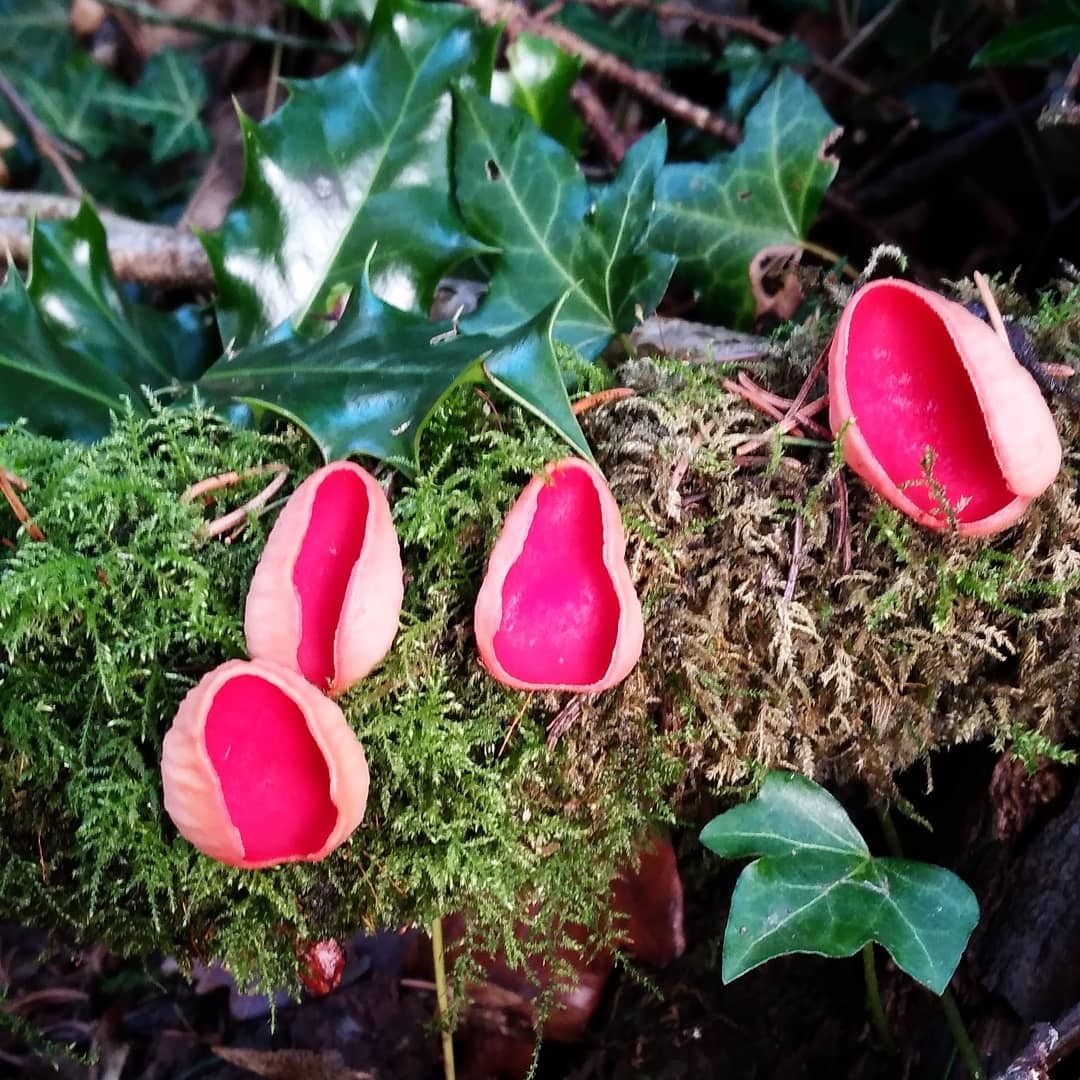
(Elfcup mushroom)
Q. What do you expect to find when you go foraging in Spring?
A. In Spring I forage mainly along the Severn Estuary, where one might encounter a spectrum of over 50 edible species such as Wild Spinach (Sea Beet) which is incredibly prolific, as is Rock Samphire, Sea Radish, aromatic Sea Asters, Sea Plantain and mustardy Scurvy Grass. In nearby hedgerows and verges, there are salad greens and vegetables such as Hop Shoots, Vetch, Dandelion, Yarrow, Pennywort, Ground Ivy, Hedge Bed Straw, Wild Garlic, Onions and Leeks and spicy Garlic Mustard. Meanwhile, the meadows are brimming with Wild Cabbage, Sorrel, Hogweed Shoots and Meadow Cress. It’s a bountiful time of year, and a great reason to get outside and enjoy some fresh air now that Winter has passed.
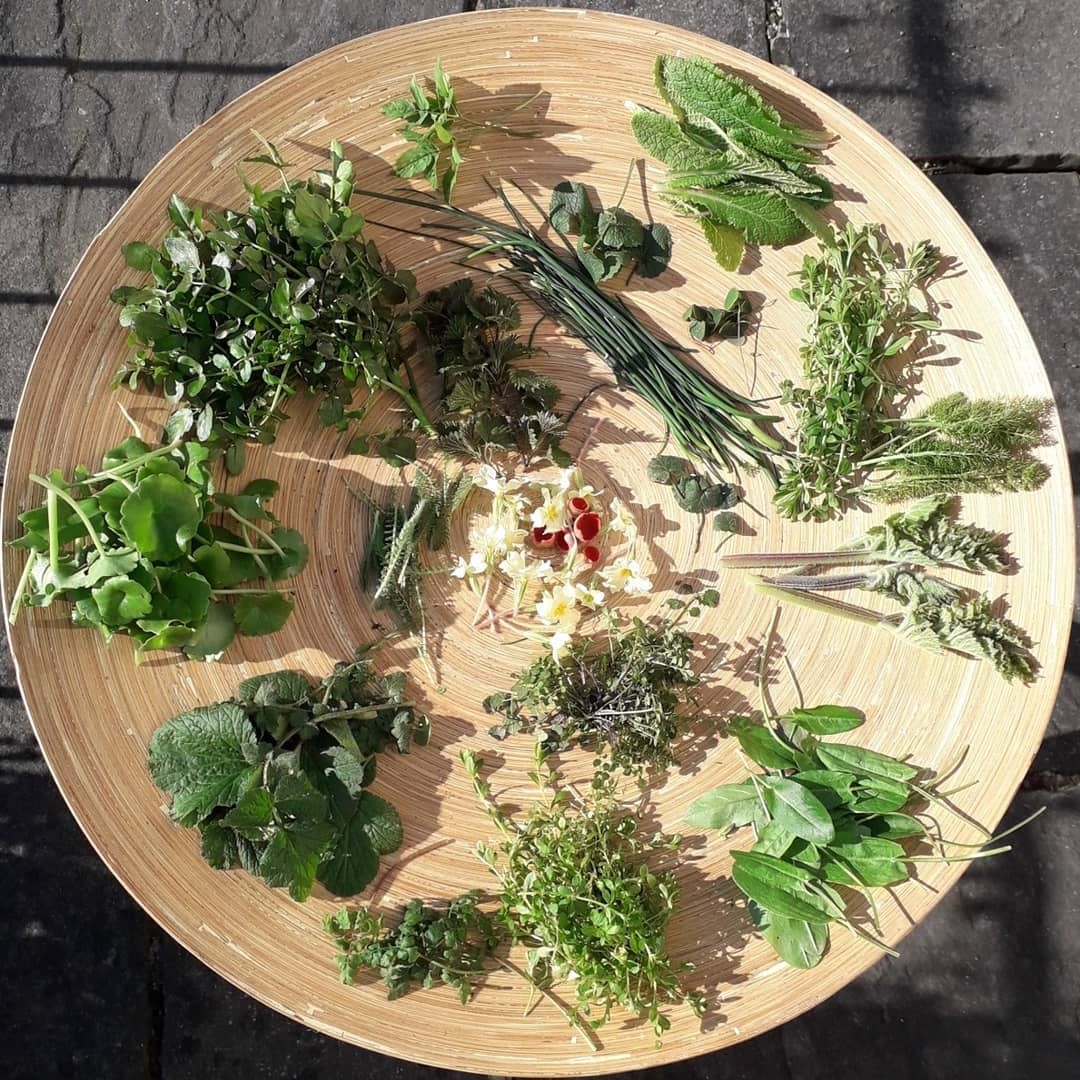
(Spring salad edibles)
Q. What do you do with the edibles you pick?
I have regular orders from Michelin-starred restaurants and other clients so I forage daily to ensure the chefs and distillers receive the produce at its freshest. Obviously, I pick items for myself and guests too. I am keen to experiment with wild ingredients, and create innovative dishes for guests on my All Day Forage and Feast, which includes a wild food tasting menu of at least ten dishes.
I love taking visitors out foraging; they are amazed at what’s around them in the countryside. I’ll identify the species, show them how to pick it, and suggest ways of using it, then visitors might collect some to take home. For example, the vibrant purple Mallow flowers, which start to bloom in late Spring, add vibrant colour to a salad. If a few handfuls are blitzed with sugar, the sugar turns bright pink - great for kids to sprinkle on to cupcakes or for adults to rim a cocktail glass!
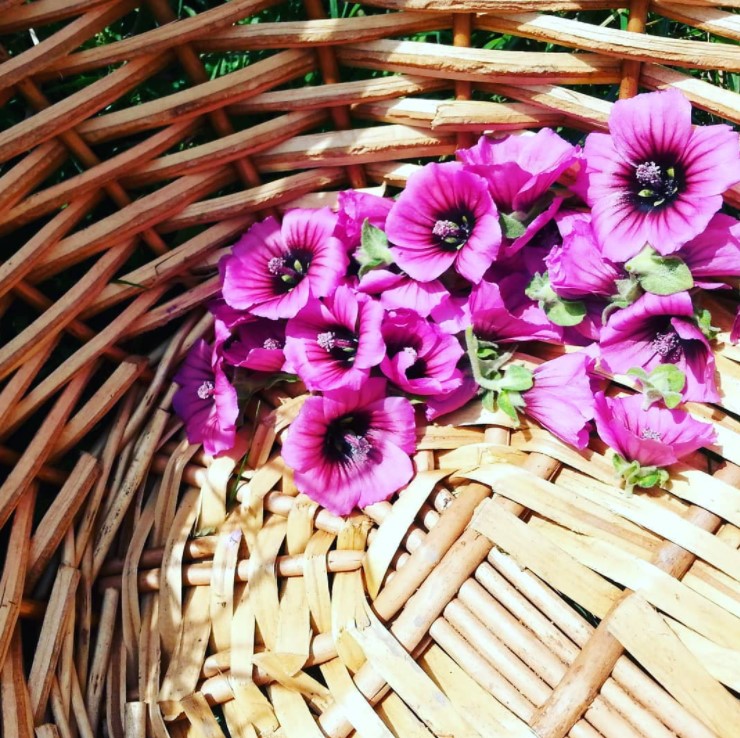
(Mallow Flowers)
Q. What types of foraging experiences do you offer to visitors?
Particularly popular with people who are new to foraging, is the Estuary, Meadow & Hedgerow Forage which lasts 1½ hours and takes place throughout the year. I lead a guided tour along the rich and biodiverse Severn Estuary near Chepstow, identifying around 30 edible species. Guests may pick some samples to take home and enjoy.
On the All Day Forage and Feast (available March to November), we pick a wide variety of edibles from more than one site, including ancient woodland and coastline. We feast together outdoors – a mixture of foraged bounty we have just collected and wild food dishes I have prepared in advance. I usually serve at least ten dishes, some using ingredients I have preserved during the year, such as pickled Larch Roses which are like zesty lemon capers, or forest fungi which I have dried to add to delicious pastries and soups. Check out this sample menu to get your mouth watering. Of course, visitors may also pick a handful of edibles to take home.
In the Autumn, we wander through rich woodlands and meadows on the Mushroom Forage, identifying and harvesting the UK's finest edible wild mushrooms. We may well find Ceps (Porcini), Chanterelles, Chicken of the Woods, Boletes, Deceivers, Hedgehogs, Oysters, Waxcaps, Field Mushrooms and more!
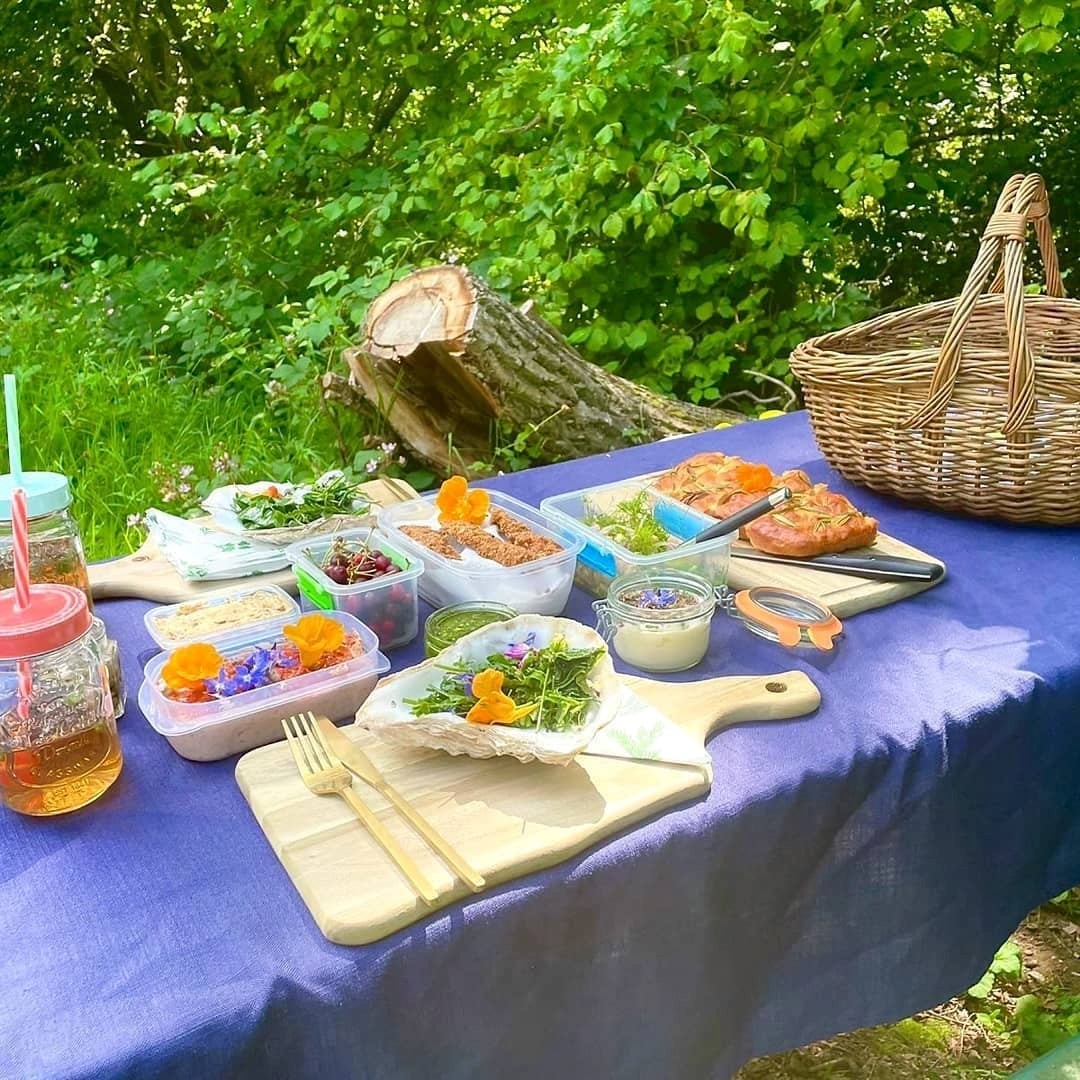
(Foraged feast)
Q. How accessible are the foraging routes you take?
A. The Estuary, Meadow & Hedgerow Forage route is suitable for everyone, and accessible by scooters and wheelchairs. To date, my youngest forager was 4 weeks old and my oldest 87 years. Two children under 14 years can come foraging for free with a paying adult, and well-behaved dogs are welcome, too.

(Chloe and her dog with wild garlic)
Q. What recipes can you recommend, using foods foraged in the Spring?
Wild Garlic makes a super pesto. Sometimes I use walnut or hazelnut oil instead of olive, and substitute wild nuts in place of pine nuts. Wild Garlic grows so prolifically, I often make huge batches and freeze it to be enjoyed throughout the year.
Many Spring greens can be enjoyed raw, so there’s never an excuse for a boring salad. Vegetables such as Wild Spinach, Hop Shoots and Hogweed Shoots are all highly nutritious and full of flavour, so I simply sauté them in butter. To get the best out of Rock Samphire, I often pickle it, as they used to do in the 16th and 17th centuries. Put some on top of a focaccia just before you bake it, and it adds a lovely carroty flavour.
Scurvy grass, which may sound unappetising, tastes just like Colman’s Mustard and has six times more Vitamin C than an orange, gram for gram. It’s delicious added to a bacon sandwich!
Q. What are the best parts and the most challenging aspects of your job as a professional forager?
A. Undoubtedly, the best part is being immersed in nature every day – it’s thrilling. I also adore sharing my edible wild world with others – it’s a joy to see their excitement and surprise when they nibble on a leaf and are blown away by the flavours! The challenge for me is balancing the behind-the-scenes administration of the business, with the irresistible desire to go out and explore.
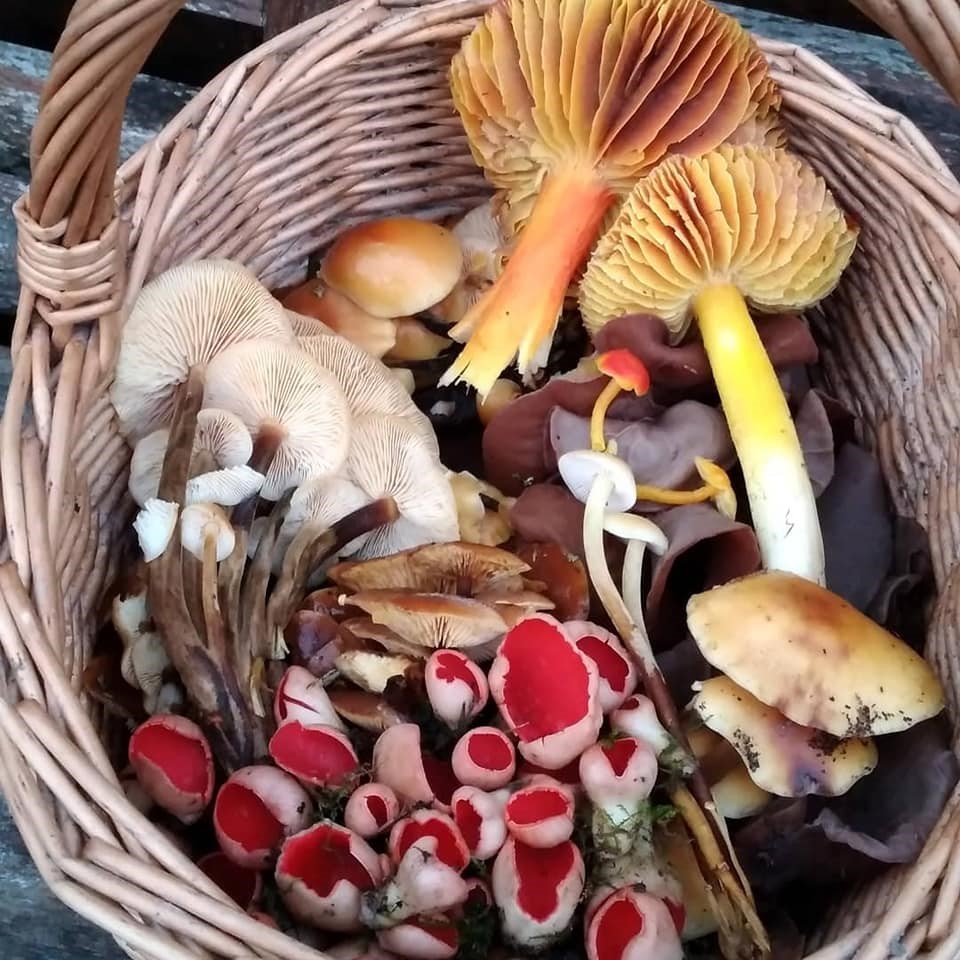
(Forest fungi)
Q. What’s next for Gourmet Gatherings?
A. I’ve seen an increase in people wanting to connect with nature, and I’m excited by the partnership I have with Penhein Glamping - luxurious yurts on a stunning site next to the ancient woodland of Wentwood Forest. I take their guests foraging, and we cook together over an open fire.
Whenever I have a spare moment, I like to write, and I have two books in the pipeline - one is foraged recipes and the other a foraging storybook for children.
I’ve just launched a Gin Distilling Experience, in partnership with Silver Circle Distillery in the Wye Valley. After foraging along the Severn Estuary for seasonal wild ingredients with aroma profiles which lend themselves to gin-making, we drive to the award-winning distillery. There, you are greeted with a gin and tonic, before learning how to create an original and tasty gin recipe, in your own miniature copper still. Finally, you blend, measure and bottle your unique 70cl creation to take home and savour. The perfect way to capture your memories of Monmouthshire.

